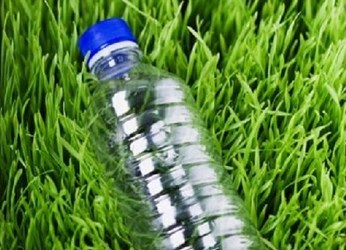Packaging Trends: Bio-Plastic Engineering Is Rising Up The Ranks
By Isaac Fletcher, contributing writer, Food Online

New methods, alternative resources, and fresh opportunities are paving the way for the future of bio-plastics
Food packaging is currently experiencing high levels of technological development, and this is particularly true with regard to bio-plastics as packaging. Looking at just the last few months, there have been numerous developments that have shaped bio-plastic trends.
One of the fastest growing trends in bio-plastic engineering involves the use of polyethylene furanoate (PEF), a plastic that is 100 percent plant-based. Spurring the development of this material, Coca-Cola and Danone worked alongside Avantium, a biotech developer, in 2012 in an effort to promote further research and development of PEF bottles. As recently as last month, Coca-Cola and Danone granted Avantium a new round of funding for further research. Coca-Cola’s continued interest and investment into PEF suggests that the drink manufacturer would readily switch from its current polyethylene terephthalate (PET) bottles to plant-based bottles if the plant-based bio-plastic proves viable.
Another event in the bio-plastics world that has garnered a great deal of attention is the announcement Heinz made stating that the company will work alongside Ford Motors to research the creation of plastic car parts made from tomatoes. In order to generate revenue from the food waste — seeds, skins, and peels — left over from making ketchup, the company is seeking ways to turn those materials into useful bio-plastics. Using leftover materials from upstream production for the creation of bio-plastics is not a new concept, but if Heinz can successfully use bio-waste from further down the production process, food processors could have a new revenue stream on available to them.
There has also been a lot of research and investment into alternative materials for creating bio-plastics. When talking about bio-plastics, many people think of corn, which, as a low-cost, high-volume product, has historically been a key resource in bio-plastic engineering. However, rather than relying on a single resource, research efforts are being focused on alternatives, such as rice starch and sugar cane. Nature & More, a Netherlands distributor of organic produce, has had success using and selling containers made by sugar cane. Continued efforts into applying alternative resources to bio-plastic engineering are an important step in ensuring a strong future for alternatives to traditional plastics.
Of course, all of this progress does not come without some hurdles and challenges. A growing concern is that bio-plastics are beginning to make some consumers nervous, especially as many come to the realization that bio-plastics have drawbacks. Although they are better for the environment and more sustainable, plant-based plastics are not compostable, just like its petroleum-based counterpart. To further compound consumer concerns, the use of genetically modified plants is fairly common in bio-plastic production, which has generated some worries over the safety of foods stored within bio-plastic containers. The bio-plastic industry should be able to overcome these hurdles, but may suffer some temporary blows to its “green” image.
